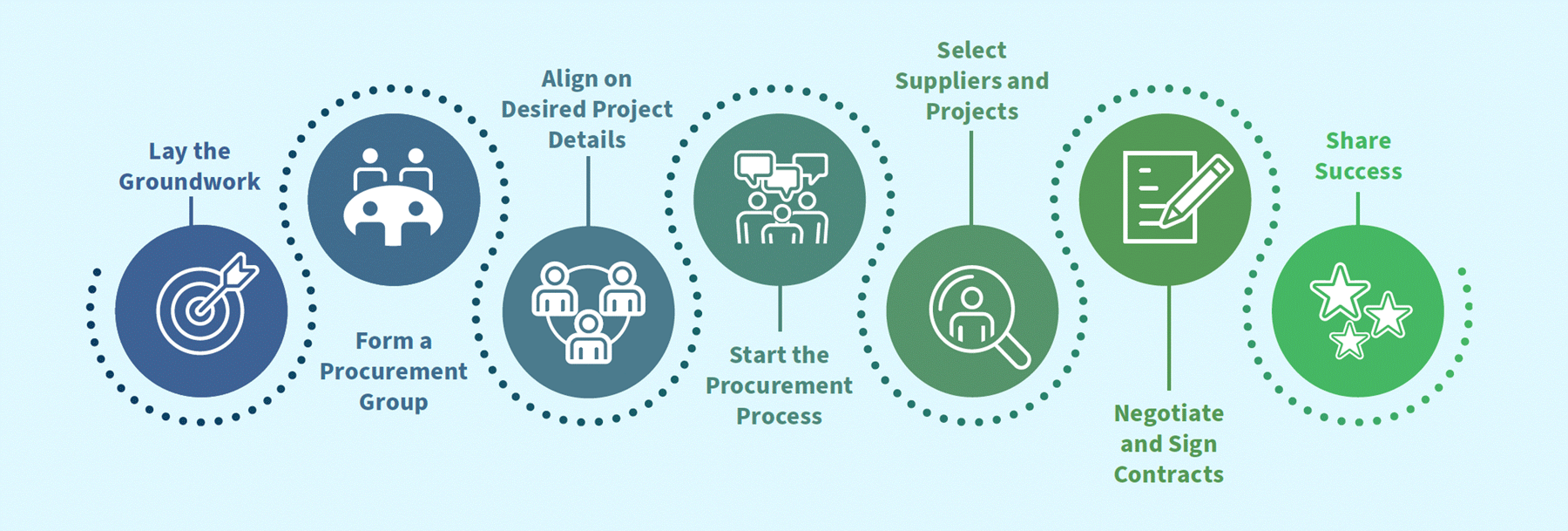Aggregation is an innovative yet underutilized approach in which two or more buyers collaborate to purchase energy from a large-scale generation facility.
There are two main forms of aggregation covered in this procurement guidance:
1. Buyer-led aggregation:
Multiple buyers form a procurement group, which then identifies desired project attributes, finds a supplier and project(s) that meet these requirements, and enables each participant to sign separate, but similar, contracts.

2. Utility special contract aggregation:
Multiple buyers form a procurement group and engage with their utility provider to facilitate the aggregated procurement. For buyers served by integrated, regulated utilities, this is the only option to receive power from a physical power purchase agreement (PPA). This can also include buyers aggregating to design or subscribe to green tariffs.
Two other types of aggregation that are not the focus of this guidance are supplier-led aggregation and community choice aggregation (CCA). In supplier-led aggregation, a renewable energy supplier finds and aggregates buyers to purchase energy from a project. The supplier identifies and secures a project location, negotiates contracts with several offtakers independent of each other, and then uses the signed physical power purchase agreements (PPAs) or virtual PPAs to raise financing. CCA enables local governments to procure power on behalf of their residents, businesses, and municipal accounts, and is only possible in municipalities that have a state law authorizing CCA and that have passed enabling local legislation. Read more about CCA.
